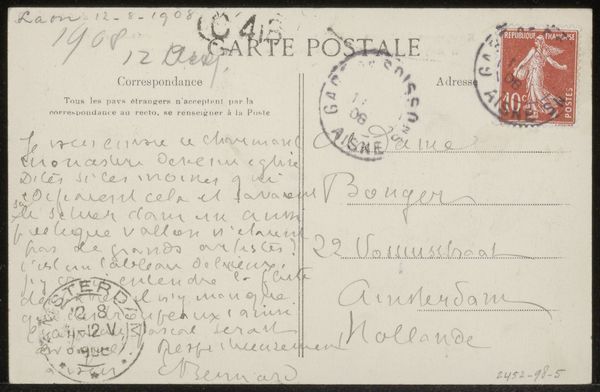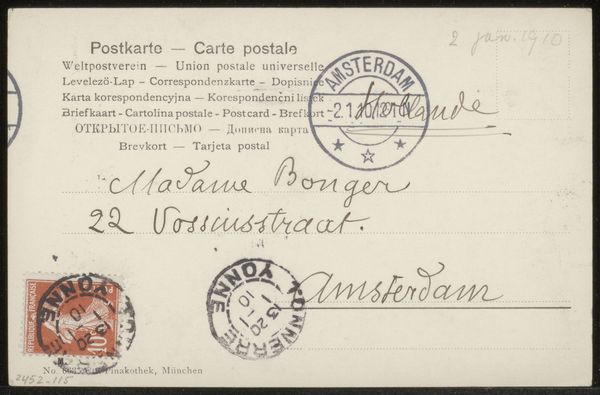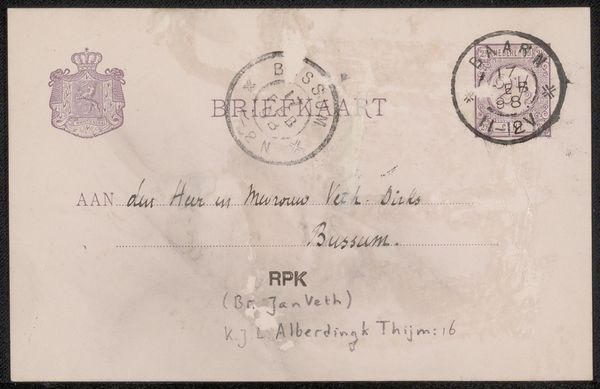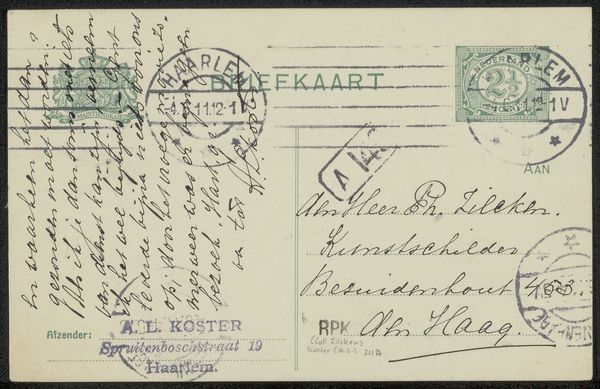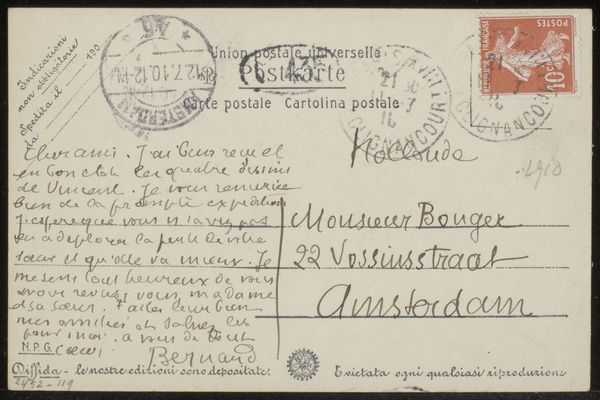
drawing, paper, ink, architecture
#
drawing
#
paper
#
ink
#
architecture
Copyright: Rijks Museum: Open Domain
Curator: This is "Briefkaart aan Pieter Haverkorn van Rijsewijk," possibly from 1907, created by F. Ritter using ink on paper. Editor: The stark, graphic quality of this postcard evokes the immediacy of fleeting interactions. I'm drawn to its subdued palette, creating a snapshot of everyday communication at the turn of the century. Curator: Indeed. It’s a simple, functional object, yet the careful application of ink gives it a unique, handcrafted feel. Note the precise strokes that shape the architectural lettering—a stark contrast to today’s digital fonts. Editor: But who was Pieter Haverkorn van Rijsewijk, and what does this document reveal about the cultural landscape of its time? Addressed to the Director of Museum Boijmans, this postcard represents a form of administrative or perhaps personal communication deeply entwined with institutional power structures of the early 20th century. Curator: Interesting observation. Structurally, the card’s division—the formal printed address versus the handwritten inscription— creates a visual and textual dialogue that underscores a tension between public and private spheres, formal protocols versus informal exchanges. The stamp, in and of itself, is like a mini-narrative. Editor: Exactly. A red German stamp dated "24 1.07 10-11," anchors it geographically and historically. A message that transcends physical presence; an act freighted by potential encounters and the possibility of connection between different historical moments. Who were these senders, and what urgencies were behind this need to get their message across quickly? Curator: Consider the compositional weight given to typography itself, almost abstracted in its presentation. We can almost appreciate it outside the context of legibility. Editor: You are looking closely, because it has resonance now too—especially as communication tools change so rapidly. It’s a reminder of both how communication once happened, and also that, sometimes, the messages we receive and send barely survive—the faintest marks across time. Curator: Precisely. It urges a re-examination of routine, of its textures and materials, which reveals how such objects echo even after many years. Editor: Very well observed, and a thoughtful summary.
Comments
No comments
Be the first to comment and join the conversation on the ultimate creative platform.





